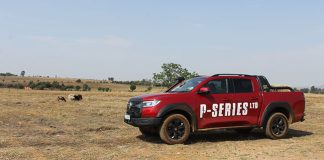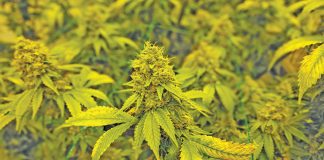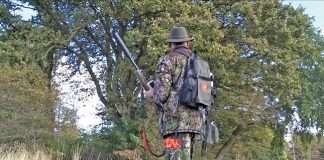
Photo: Magda du Toit
Agricultural research and farming practices are increasingly driven by the need for sustainability and lower environmental impact.
Conservation agriculture comprises a wide spectrum of practices, including cultivation methods, cover crops, provision of a pollinator habitat, and integrated pest management (IPM), including biological pest control.
Despite the fact that these practices are now more commonly used, there are some factors that may thwart successful implementation.
Neighbouring farmers should be sensitive to the fact that the manner in which they perform pest control may have an impact on each other’s control practices.
Pest control
In nature, it is not uncommon for organism populations to fluctuate from season to season. Organisms are frequently under attack from predators, parasites, parasitoids and diseases, often resulting in high mortality rates. Unfortunately, in agriculture, the farmer cannot always wait for nature to run its course. By the time nature brings balance to the ecosystem, the farmer’s crop may be beyond help, or even be at a point that can be described as a disaster.
The ultimate goal of pest control programmes is to act preventatively rather than curatively and to suppress pest populations and damage.
Pests can be controlled by implementing:
- Chemical control;
- Cultural control, including crop rotation, use of locally adapted and/or pest-resistant or -tolerant varieties, sanitation, and the manipulation of planting and harvest dates to avoid pests;
- Biological control by using natural enemies of pests;
- Mechanical control through cultivation practices or pest trapping;
- Biotechnology. Over the past 25 years, an increasing number of farmers have chosen to produce crops containing genetically engineered traits to control certain Lepidoptera species and manage weeds.
Chemical control methods include:
- Herbicides to eliminate unwanted plants. In agriculture, the term ‘weeds’ is generally used for all plants that are unwanted and compete with the crop for sunlight, moisture and nutrients. Herbicides can be applied before planting to prevent new weeds from germinating, or after weed emergence. Post-emergence applications target weeds that are well established and growing actively.
- Insecticides to control insect infestations. Some insecticides are applied directly onto the foliage to treat above-ground pests such as Lepidoptera, moths or aphids, while others are incorporated into the soil to control soil-dwelling insect pests. For foliar applications to be effective, timing is crucial.
- Fungicides to control pathogenic organisms.
Integrated pest management
The aim in any IPM programme is to restore the balance and keep pests and diseases down to an acceptable level.
“The aim is not to eradicate them altogether, as they also have a role to play in the natural system,” says Dr Gerhard Verdoorn, operations and stewardship manager at CropLife South Africa.
In the past, farmers producing fruit and grain or forage crops relied entirely on chemicals to produce quality crops and pest- and disease-free fruit. Today, it is widely accepted that, for sustainable control, a combination of methods should be implemented. In some instances, the overuse or sole reliance on chemical pesticides has led to pesticide resistance, outbreaks of previously suppressed pests, or, in severe cases, environmental contamination. IPM programmes evolved to address these problems.
According to Verdoorn, IPM is based on a multi-faceted approach that focuses on long-term, sustainable solutions for managing pests. IPM systems aim to reduce the use of non-selective chemicals and produce healthy crops with minimal impact on the environment and human health.
An IPM programme starts with scouting to identify the pest, and determining the pest population as well as the severity of the infestation. The following is important in an IPM programme:
- The accurate identification of pests;
- Regular and continual monitoring of pests and crop damage;
- Determining the threshold levels to know when action is needed;
Prevention; - Combining biological, cultural, physical and chemical control methods;
- Evaluation of the effect of the pest management actions.
Biological control methods
According to Nadine Botha, technical field service representative at Insectec in Limpopo, the purpose of biological control is to restore the balance between pests and their natural enemies to keep the pests as well as the damage or secondary diseases caused by them at acceptable levels.
“In biological pest control, living organisms are employed to suppress pest densities. Pests such as insects, mites, weeds and plant diseases are thus controlled via predation, parasitism, and herbivory or other natural mechanisms,” she explains.
Farmers should remember that biological control requires a comprehensive understanding of the ecology and behaviour of the target pest insect as well as the pest’s natural enemies.
Many fruit producers still employ chemical control measures three to four months prior to the harvesting season, but due to maximum residue level restrictions on chemical usage, they need to find alternative ways to control pests and diseases. This is where the true value of biological pest control in an IPM system comes to the fore.
“Although we employ biological control measures to control pests and diseases nearer to harvesting time to meet residue limits required for especially export products, it’s not the only reason,” says Eddie Vorster, director of citrus production at Mahela Group. “The effectiveness of using natural enemies cannot be ignored. It’s also cost-effective in the sense that the cost is more or less equal to using chemical control methods.
“It’s about sustainable pest control measures that work in unison with nature. Using natural pest enemies has become an integral part of our IPM programme at Mahela.”
Biological control methods can be employed to manage pest populations that are difficult to control chemically or have developed resistance to pesticides. A variety of methods are available.
Fortuitous or adventive biological control occurs when natural enemies arrive in the land or orchard by their own means and control the pest population.
Augmentative biological control occurs when biological control agents that were reared in insectaries are released into an area where natural enemies are not present or the numbers of the predators are too low to suppress a pest population.
The goal is to increase the number or effectiveness of natural enemies in the target area to a level high enough to control the pest population efficiently. Because biological control agents are most often host-specific, it is crucial that pests are identified accurately.
Conservation biological control refers to a combination of methods and approaches to manipulate the habitat, plant diversity, production practices and pest management practices to increase the population and effectiveness of natural enemies.
The idea is to minimise the impact of cultural practices on the habitat of natural pest enemies and provide mulch or other forms of shelter for ground-dwelling natural enemies. It also includes the use of compatible pesticides.
It is important to remember that none of the pest management tactics act independently in an IPM programme. Chemical control is seen as one of the tools that is integrated into an overall strategy to mitigate the negative impacts of pests on a crop. The same principle applies to biological control.
As the entities used in biological control are living organisms, several factors must be taken into consideration:
- Transport of biological agents;
- Storage of biological agents;
- Timing of release;
- Manner of release;
- Adaptation of spraying programmes;
- Potential loss of biological control agents that are fed on by predatory insects;
- Temperature.
“It’s critical to keep these factors in mind when releasing living predatory insects in orchards or lands. Know the attributes and restrictions, so that you can realise the best value from your biological control programme. If the pest insect pressure is very high, it’s often best to do a pesticide application, followed up the release of predatory insects,” says Kobus Meintjes, commercial lead at Bayer South Africa.
The types of pesticides used in the IPM programme, as well as how and when they are applied, affect the success of biological control.
“Biological control agents are often even more sensitive to pesticides than the target pests or diseases. How and when pesticides are applied definitely impact the success of biological control. Broad-spectrum pesticides can kill or affect a wide variety of biological control agents. Pesticides that have a reduced risk or lower toxicity to the biological control agents should be used, and it’s crucial to take note of the residual characteristics of an insecticide,” Meintjes cautions.
The danger of spray drift
Pesticide drift can occur during application when droplets or dust travel away from the target area or site to nearby unintended lands or orchards. It can also happen after the applications when vapour moves off-site. The following factors can affect the risk of drift:
- Weather conditions, including minimum and maximum wind speed;
- Spray droplet size and pressure;
- Spray release height;
- Buffer zones.
There are a number of ways to minimise drift when applying crop protection products:
- Adjust the nozzle size and pressure to ensure larger droplets;
- Avoid application during windy conditions;
- Avoid application during foggy conditions;
- Keep in mind that hot weather can lead to vapour drift.
Verdoorn also warns farmers not to fall into the trap of using unregistered biological remedies, especially if they are offered with promises of a great improvement in the crop.
“Stick to the well-known and registered biological products in the market and do some research,” he says.
Read the product label
Reading and following the label directions carefully is crucial. The label may prohibit applications under certain weather conditions, using high-pressure sprays, or using certain nozzle sizes. Labels contain detailed and important information on the correct and legal use of the product.
They also set out potential hazards associated with the product as well as instructions to follow in the event of a spill or accidental contamination, exposure or intake.
Verdoorn urges farmers to talk to their neighbours and focus on community-based agronomy.
“No farm can be farmed in isolation, especially when biological pest management becomes important in the farming toolbox. Entire areas should operate according to the same IPM principles to reap the maximum benefit of biological practices.”
If you suspect that your neighbour’s actions are responsible for damage or the death of biological control insects on your farm, you can consider the following, according to Verdoorn:
- Lay a complaint against the person who caused the damage to your beneficial insects with the Inspectorate of the Directorate of Agriculture Inputs Control ([email protected]);
- Contact an attorney to lodge a civil claim for damage to your property. Email Dr Gerhard Verdoorn at [email protected], Kobus Meintjes at [email protected], or Nadine Botha at [email protected].










